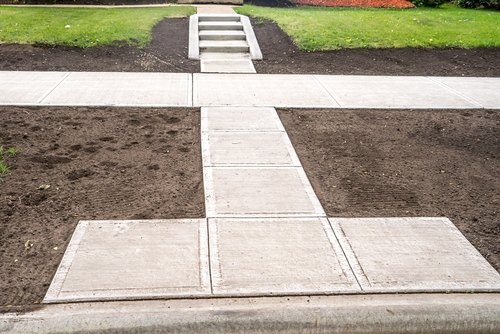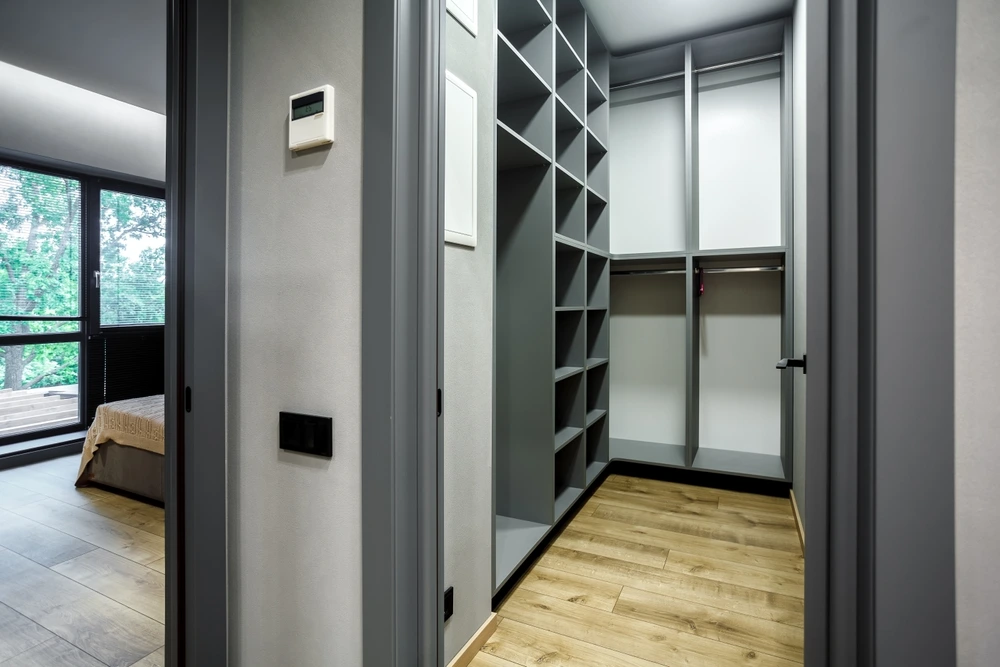July 26, 2024 - Benjamin Ehinger
Sidewalk Replacement Debris: Efficient Disposal and Recycling Techniques
CALL NOW 844-762-8449
Replacing a sidewalk can generate a considerable amount of debris, leaving you with the challenge of efficient cleanup. Using a roll-off dumpster rental from Waste Removal USA can streamline the debris management process, making your project more manageable. Whether you’re dealing with cracked, crumbling concrete or more extensive damage, proper debris disposal is crucial for maintaining safety and cleanliness at your site.
Managing sidewalk replacement involves not only preparing the new concrete but also effectively handling the waste materials. Rolling out a construction dumpster rental ensures that all rubble, broken concrete, and old materials are contained and removed promptly. This service is especially useful for larger projects or locations with tight restrictions on debris disposal.
When planning your sidewalk replacement, consider the average cost and potential need for permits. Keeping the area clear of debris not only facilitates smoother work but also adheres to local safety regulations. Proper maintenance and timely repair can prevent future damage, contributing to the longevity of your new sidewalk.
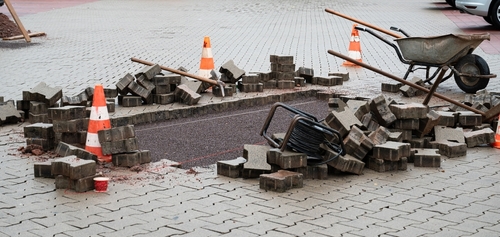 Replacing a sidewalk involves several essential steps to ensure the new pavement’s durability and aesthetic appeal. Key phases include demolishing the existing sidewalk, preparing the area for the new pavement, and pouring and finishing the concrete.
Replacing a sidewalk involves several essential steps to ensure the new pavement’s durability and aesthetic appeal. Key phases include demolishing the existing sidewalk, preparing the area for the new pavement, and pouring and finishing the concrete.
 Ensuring your sidewalk remains in good condition not only enhances curb appeal but also addresses legal responsibilities and accessibility concerns. Proper maintenance can extend the life of your sidewalk and prevent costly repairs.
Ensuring your sidewalk remains in good condition not only enhances curb appeal but also addresses legal responsibilities and accessibility concerns. Proper maintenance can extend the life of your sidewalk and prevent costly repairs.
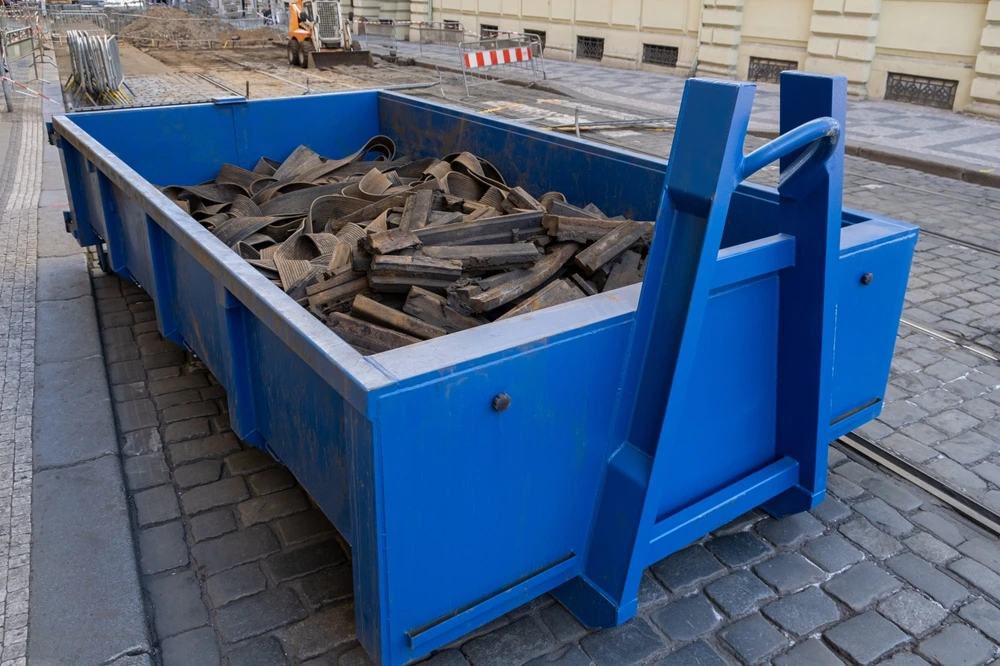 Waste Segregation on Construction Job Sites: Best Practices for Efficiency and Sustainability
Waste Segregation on Construction Job Sites: Best Practices for Efficiency and Sustainability
Date: September 06 ,2024
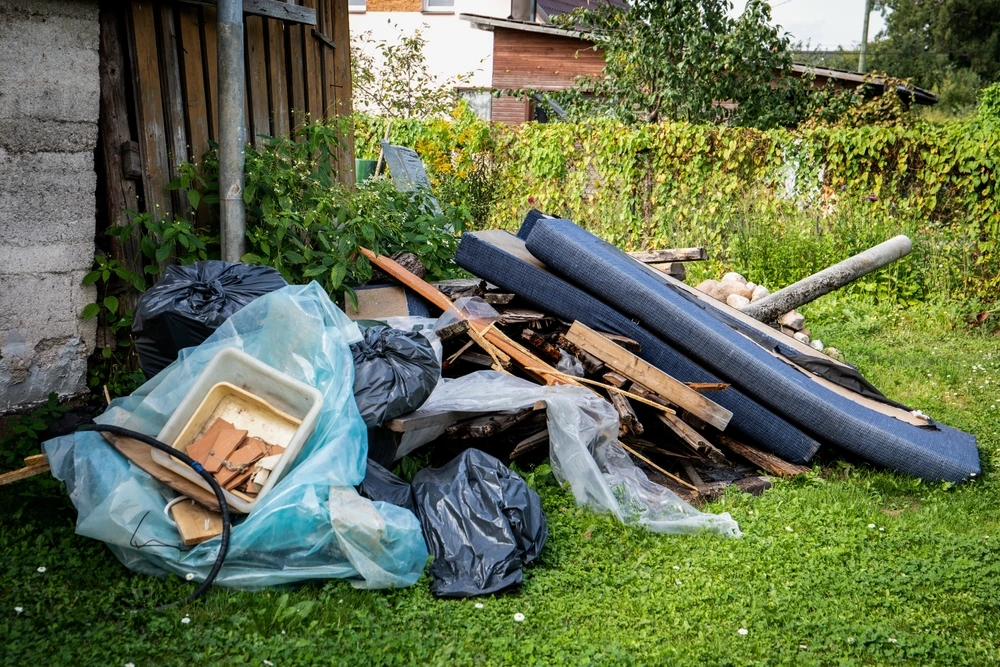 Junk Removal in Mount Pleasant SC: Efficient Services for a Cleaner Community
Junk Removal in Mount Pleasant SC: Efficient Services for a Cleaner Community
Date: September 06 ,2024
Key Takeaways
- Efficient debris management requires a roll-off dumpster rental.
- Properly disposing of old sidewalk materials keeps your site safe.
- Considering costs and permits is essential for a successful project.
Understanding Sidewalk Replacement
Sidewalk replacement becomes essential when dealing with extensive damage that compromises safety and aesthetics. Evaluate the type and extent of damage to determine if replacement is necessary and consider the benefits of using a local dumpster rental for debris management.Types of Sidewalk Damage
Cracks and Fractures- Small cracks may be repairable, but large fractures might indicate deeper structural issues.
- Cracks caused by tree roots can disrupt the surface significantly.
- Uneven surfaces pose trip hazards.
- Sunken sections may result from soil erosion or poor initial installation.
- Spalling involves the chipping or flaking of the concrete surface.
- Scaling happens due to freeze-thaw cycles and affects the surface integrity.
When Replacement Is Necessary
Safety Hazards- Major cracks and uneven areas create tripping hazards, necessitating replacement.
- Compliance with regulations such as those at nycstreets.net is crucial.
- Evaluate if the damage is isolated or widespread.
- If multiple areas are affected, a complete replacement is often more economical.
- Repeated repairs may detract from the sidewalk’s appearance.
- Full replacement restores consistency and enhances curb appeal.
- For projects generating significant debris, consider a roll-off dumpster rental.
- A concrete dumpster rental streamlines cleanup and disposal, making the project more efficient.
Legal Considerations and Permits
Ensuring that you comply with legal requirements and obtain the necessary permits is crucial when replacing a sidewalk. Failing to do so can lead to fines and project delays.Acquiring Necessary Permits
Most localities require a permit for sidewalk replacement. This permit ensures the work meets city standards and reduces the risk of accidents. To obtain one, contact your local Public Works Department. For instance, in some areas, you need an Encroachment Permit to replace a sidewalk in front of your property. Using a licensed contractor is strongly recommended. Licensed professionals are familiar with the permitting process and can help avoid violations. Always check if your city has specific permit application forms or online submission systems to streamline the process.Understanding Local Regulations
Local regulations can vary widely. For example, Berlin’s code requires compliance with town-imposed excavation standards. These requirements include specific cement depth and other construction standards. Understanding these local rules helps ensure compliance. Regulations also dictate who can perform the work, often requiring a licensed professional. Following these regulations prevents issues with highway rules and other municipal guidelines. Renting a roll-off dumpster ensures quick and lawful debris disposal. Proper cleanup not only keeps your site tidy but also helps you adhere to local regulations regarding waste management.The Sidewalk Replacement Process
 Replacing a sidewalk involves several essential steps to ensure the new pavement’s durability and aesthetic appeal. Key phases include demolishing the existing sidewalk, preparing the area for the new pavement, and pouring and finishing the concrete.
Replacing a sidewalk involves several essential steps to ensure the new pavement’s durability and aesthetic appeal. Key phases include demolishing the existing sidewalk, preparing the area for the new pavement, and pouring and finishing the concrete.
Demolition of the Old Sidewalk
Begin the project by breaking up the existing concrete. You will need tools like a jackhammer or a sledgehammer to effectively demolish the old sidewalk. Start at the corners and move inward, breaking the concrete into manageable pieces. Renting a roll-off dumpster can help you manage the pile of debris efficiently. Load the broken concrete and any other waste materials into the dumpster to keep your workspace clean and organized. This step minimizes hazards and eases the subsequent phases of the project. Ensure all remnants, including small fragments and dust, are cleared away. Having a clean, debris-free surface is crucial for laying the new sidewalk.Preparing the New Sidewalk
After clearing the old debris, level the ground using a tamp. This step ensures a stable base for the new concrete. Install forms to outline the sidewalk’s shape and edges, using wooden boards to create the boundaries. Next, place rebar within the forms to reinforce the concrete. This extra layer of strength helps the sidewalk withstand heavy loads and reduces the risk of future cracking. Apply a bonding agent to the edges where the new and old concrete will meet, ensuring they adhere properly. Check for and include expansion joints as needed. Expansion joints provide resilience against temperature fluctuations and prevent cracks by allowing the concrete to expand and contract.Concrete Pouring and Finishing
With the area prepped, mix your concrete according to the manufacturer’s instructions. Using Sakrete High-Strength Concrete Mix is advisable for its durability and reliability. Pour the concrete into the prepared forms, distributing it evenly. Use a tamp to compact the concrete, eliminating air pockets and ensuring a solid foundation. After tamping, smooth the surface with a magnesium float to achieve a polished finish. This tool helps distribute fine particles for a smooth appearance while aiding in moisture evaporation. Before the concrete sets completely, use a tool to press along the expansion joints to maintain their integrity. Finally, consider sealing the concrete to protect it from weather and wear, extending its lifespan. Sealing prevents water penetration and resists stains, maintaining a fresh look for years.Costs and Considerations
Before embarking on a sidewalk replacement project, it’s crucial to understand various expenses involved and the importance of selecting an experienced contractor. These details will aid in making the decision-making process smoother and more informed.Estimating Sidewalk Replacement Expenses
The average sidewalk replacement cost can range from $1,600 to $4,000 depending on the project’s scope. For minor repairs, costs per square foot typically range between $5 and $15. Factors such as the extent of damage, material quality, and labor charges all play significant roles. If you plan to handle debris, renting a roll-off dumpster can greatly facilitate cleanup. This helps maintain a tidy worksite and prevents delays. Additionally, obtaining multiple quotes ensures you get the best deal tailored to your needs.Choosing the Right Contractor
Selecting the right contractor is vital for successful sidewalk replacement. Experience and customer service should be top priorities. Look for contractors with positive reviews and proven track records. Verify their credentials and insurance to protect your property and investment. Obtaining detailed quotes is essential to avoid hidden expenses. A reputable contractor will provide transparent pricing and detailed information about the costs involved. Assessing their expertise will help ensure quality workmanship and timely project completion. Utilizing services like Waste Removal USA for a roll-off dumpster rental can enhance your contractor’s efficiency, contributing to a smoother, more organized project. This choice ultimately supports a cleaner, safer environment during the replacement process.Maintaining Your Sidewalk
 Ensuring your sidewalk remains in good condition not only enhances curb appeal but also addresses legal responsibilities and accessibility concerns. Proper maintenance can extend the life of your sidewalk and prevent costly repairs.
Ensuring your sidewalk remains in good condition not only enhances curb appeal but also addresses legal responsibilities and accessibility concerns. Proper maintenance can extend the life of your sidewalk and prevent costly repairs.
Routine Sidewalk Maintenance
Routine maintenance involves regular inspections to identify cracks, uneven surfaces, and other issues. Small cracks can be addressed with patching material and anchoring cement to prevent them from spreading. Mudjacking can fix larger sunken areas by leveling the concrete. Regularly clean your sidewalk to remove debris and prevent dirt buildup. Caulking can seal joints and edges, keeping out water and debris that could cause damage during freeze-thaw cycles. Budgeting for these tasks can help manage concrete sidewalk repair costs over time.Long-Term Care and Accessibility
Long-term care considers the sidewalk’s lifespan and accessibility. Grinding can smooth uneven sections, preventing tripping hazards and complying with ADA requirements. Check for accessibility barriers such as uneven surfaces and install ramps where necessary. Additionally, investing in a roll-off dumpster rental helps manage debris cleanup efficiently during major repairs. This ensures a safer environment and maintains the sidewalk’s appeal. Establishing a long-term care plan that includes regular inspections and timely repairs can avoid large-scale replacements.Frequently Asked Questions
Sidewalk replacement involves costs, debris management, legal responsibilities, and techniques for effective repair. Understanding these aspects can aid in planning and executing a successful project.What are the typical costs associated with sidewalk debris removal?
Sidewalk debris removal costs vary depending on debris volume and local disposal fees. Typically, you can expect to pay between $150 and $500. Renting a dumpster from services like Waste Removal USA can streamline debris management and often prove cost-effective.What methods are recommended for dealing with debris from concrete sidewalk replacement?
The most efficient methods include renting a roll-off dumpster, segregating recyclable materials, and hiring a professional cleanup service. Using a dumpster rental can help manage large amounts of concrete and other debris, ensuring the site remains safe and orderly.How much might it cost to remove and install a new concrete sidewalk?
The cost to remove and install a new concrete sidewalk averages between $1,800 and $3,800 for standard-size walkways. Variables such as sidewalk dimensions, region, and complexity impact these costs. For detailed estimates, refer to articles on sidewalk repair costs and average repair costs.Are property owners responsible for sidewalk repairs in most municipalities?
Yes, in many municipalities, property owners are responsible for maintaining the sidewalks adjacent to their property. This includes regular repairs and ensuring the walkways are safe for public use. Refer to local regulations like the 50/50 Sidewalk Replacement Program for details.Can you pour new concrete over an existing sidewalk, and what are the implications?
Pouring new concrete over an existing sidewalk is possible but not always recommended. This method can lead to bonding issues and future structural problems. It is often best to remove and replace the old concrete for a more durable and longer-lasting solution.What are some effective techniques for repairing a pitted sidewalk?
Effective techniques for repairing a pitted sidewalk include patching with concrete resurfacer, using a concrete overlay, and employing leveling methods like PolyLevel. For more comprehensive repairs, consider hiring a professional service to ensure quality and durability.RECENT BLOGS
 Waste Segregation on Construction Job Sites: Best Practices for Efficiency and Sustainability
Waste Segregation on Construction Job Sites: Best Practices for Efficiency and Sustainability
Date: September 06 ,2024
 Junk Removal in Mount Pleasant SC: Efficient Services for a Cleaner Community
Junk Removal in Mount Pleasant SC: Efficient Services for a Cleaner Community
Date: September 06 ,2024
Our Reviews
Brian Healy
1725553543
Heather was so very pleasant, informative and charming. Next time… I will use you again.
Brandi Childers
1724853716
Ricardo helped me with my reservation. He made everything super clear and answered all my questions to help me pick the right dumpster to rent!
Steven Hewett
1724785537
Heather made the sales and scheduling experience extremely easy. Thank you for having great employees that care about conducting great business.
Jackson Vandiver
1724703158
Great service and fantastic customer service department. I would use them again.
kristin hester
1723492493
Vanessa was amazing!
LATEST BLOGS

